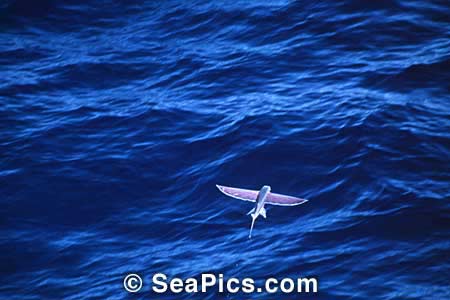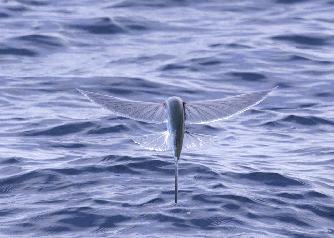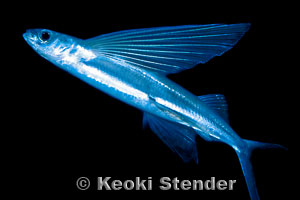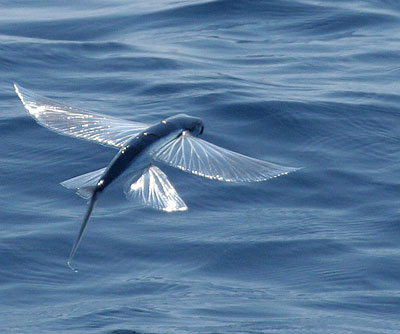
Cheilopogon pinnatibarbatus californicus
FAMILY
Exocoetidae
TAXONOMY
Exocoetus californicus Cooper, 1863, Santa Catalina Island, California.
OTHER COMMON NAMES
French: Exocet californien; Spanish: Volador de California.
PHYSICAL CHARACTERISTICS
Maximum length 15 in (38 cm). One of the “four-winged” flyingfishes;
both pectoral and pelvic fins are enlarged. Lower
lobe of caudal fin is also considerably larger than the upper.
Bluish gray dorsally, silver ventrally.
DISTRIBUTION
Oregon to southern Baja California.
HABITAT
Surface waters of the open ocean.
BEHAVIOR
Schooling fishes, capable of leaping out of the water and gliding
for long distances, possibly as a means of evading predators.
FEEDING ECOLOGY AND DIET
Zooplankton and small fishes.
REPRODUCTIVE BIOLOGY
Spawns in the summer months. Eggs are pelagic, and stick to
floating seaweed and other debris. The eggs are approximately
0.07 in (1.8 mm) in diameter. Larvae are roughly 0.17 in (4.5
mm) long at hatching.
CONSERVATION STATUS
Not threatened.
SIGNIFICANCE TO HUMANS
Occasionally used as bait.
Photo Gallery of - California flyingfish





 Animalia Life
Animalia Life